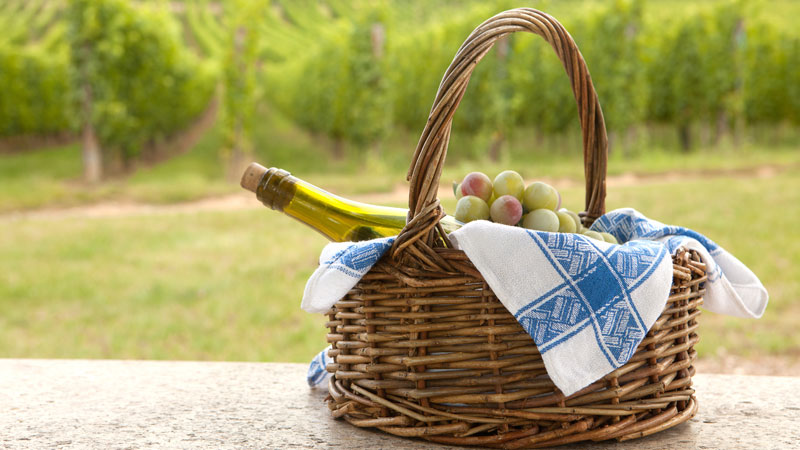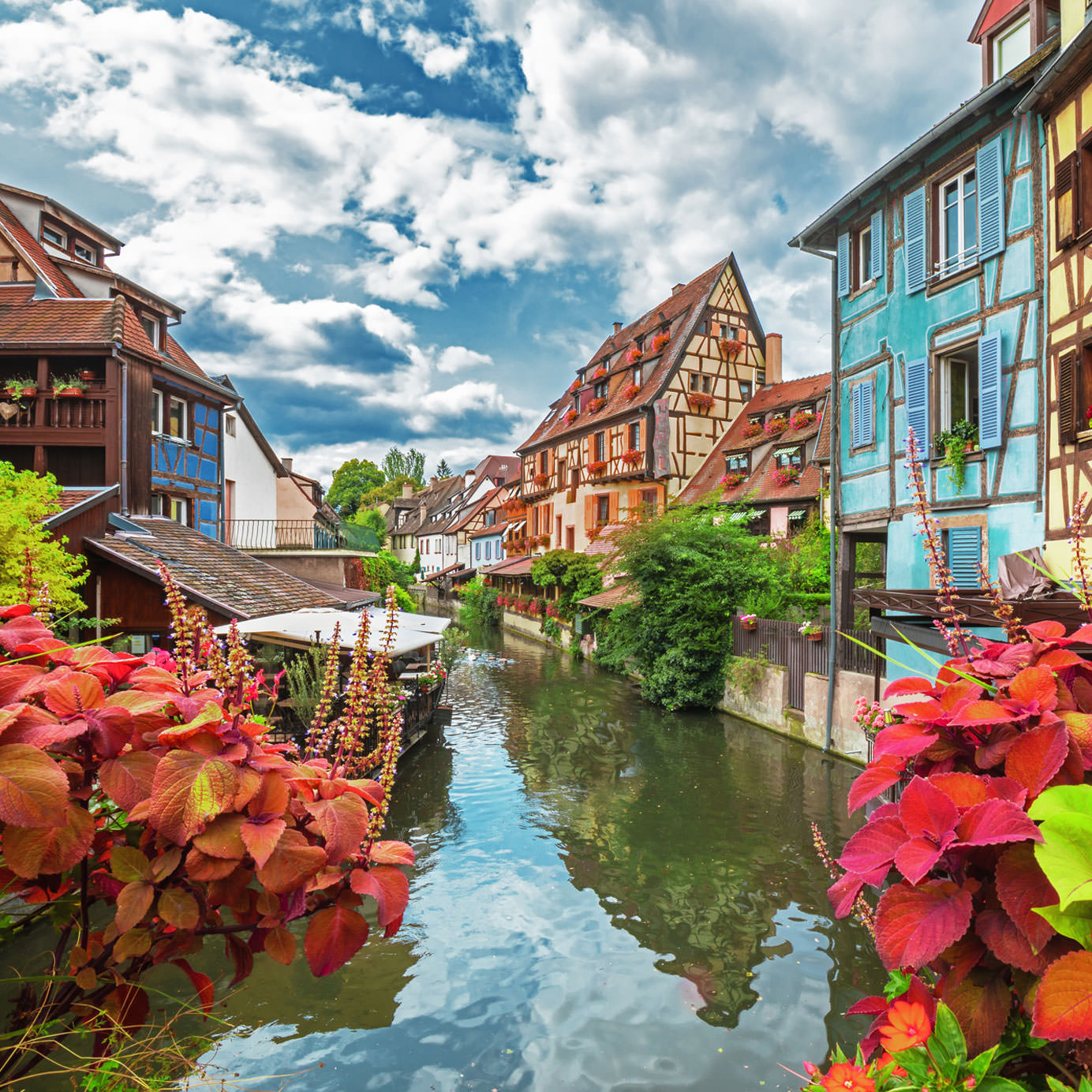
Imagine I told you that you could have a bottle of one of the world’s absolute best white wines, from a truly iconic vineyard, made by a winery that has been family-owned and -operated for centuries. Sounds pretty cool, right?
Now imagine what that wine might cost you. If you’re attuned to the market prices of, say, grand cru white Burgundy, you’re probably estimating upwards of at least $500. And that’s true, if your search for world-class white wine starts and ends in Beaune.
Fortunately, there’s another place not that far away from Burgundy that produces some of the best whites in the world. Despite a measure of international acclaim, it doesn’t command anything like those astronomical prices cited above.
Alsace is the place, and those who love exceptional white wine should become intimately familiar with it.
Where to Look (and Why)
One of the first things winemakers will say about Alsace is how its geology is utterly confusing. Thanks to millions of years of plate tectonics and weathering, the region is a patchwork quilt of soil types, with everything from granite to limestone to clay to shale, often within a short distance of one another.
In certain vineyards you can even see the soil composition change between individual rows. This means that the same variety can have wildly different expressions from vineyard to vineyard and village to village. It’s tricky to navigate, of course, but demonstrates the region’s remarkable versatility.
The region is famous for its Riesling and Pinot Gris, and they comprise the majority of plantings within the 51 grand crus of Alsace. Gewürztraminer and Muscat round out the region’s so-called “noble varietals.” Pinot Blanc, Sylvaner, Auxerrois, and even Chardonnay are also grown here, as well as Pinot Noir.
The Rangen de Thann is a dizzyingly steep grand cru vineyard situated at the southern edge of Alsace. It’s home to two of the most iconic vineyards in the world: Clos St. Urbain, owned by Domaine Zind-Humbrecht, and Clos St. Théobald, owned by Domaine Schoffit.
In both locations, grapes are grown on meager volcanic soils. This gives the resulting wines smoky notes that defies their varietals and defines the vineyards. Vintages dating back to the mid-’90s remain vital and penetrating. Oh, and did I mention that you can buy the current releases of each for (much) less than $100?
Arguably the most iconic wine in all of Alsace is Maison Trimbach’s Clos Ste. Hune Riesling. Grown in a specific type of limestone, known as muschelkalk, which is studded with the ancient fossils of sea critters, it is a knockout wine. It has incredible complexity and freshness, even with extensive aging. Best of all, you can buy it for less than $200.
Beyond the Usual Suspects
Despite the saccharine reputation Riesling has in America, Alsatian Rieslings have typically been made quite dry. Pinot Gris and Gewürztraminer, on the other hand, were traditionally left sweet in Alsace. Now, more forward-thinking producers are reorienting their winemaking to produce dry versions of those varieties. These new iterations are more versatile at the dinner table and, in many cases, more interesting to drink.
Additionally, while Alsace has always taken crémant seriously, there’s been a tremendous surge in excellent, widely available sparkling wine from the region. (Seeing as how white wine grapes grow so well in Alsace, it makes sense that it would make great sparkling wine.) You can find versions made from the noble grapes, of course, but perhaps the most exciting things are happening with Pinot Noir.
If you want something besides white wine, Alsace has been making great strides as a producer of elegant, expressive Pinot Noir. Climate change has indeed played a considerable role in this shift. While Pinot Noir remains a small part of the general plantings, several producers are excited about the long-term potential to make Pinot Noir to rival Burgundy. Valérie Beyer of Domaine Emile Beyer had even gone so far as to replace some of her vines in the Pfersigberg grand cru vineyard with Pinot Noir. It’s as bold a statement as any winemaker can make in such a storied region.
Alsace may not yet possess the cache and cultural sway of Burgundy, but that hardly matters. Who needs those agonizingly expensive and frustratingly elusive wines when another region with exceptional terroir and history lies just around the bend?
For those who might require a gravy train to finance our wine-soaked dreams, this is it. Alsace has arrived.

Five Bottles to Try … and One to Covet
Joseph Cattin Crémant d’Alsace Brut
There are of course plenty of fine examples of Alsatian crémant widely available, but this bottling made from 100 percent Pinot Blanc highlights the region’s strength in sparkling wine that is both highly drinkable and yet more rich and complex than many other crémants from the rest of France. Average price: $15.
Famille Hugel Riesling
A wonderful introduction to Alsace’s take on Riesling: bright and full of tart lime, racy and a touch bitter, yet at the same time quite dry and more full-bodied than what you’ll often find across the border in Germany. Average price: $18.
Emile Beyer Tradition Pinot Noir
Alsace’s increased interest in Pinot Noir has caused a surge in bottlings, with growers and producers alike eager to show off what their region can do with this iconic grape. Here, bright bursts of tart red cherry mix with hints of anise and clove to produce a surprisingly complex, very affordable wine. Average price: $22.
Domaine Zind-Humbrecht Pinot Gris
The low-intervention winemaking at Zind-Humbrecht pays off big time with this nuanced, fascinating Pinot Gris that’s so vastly different from the Pinot Grigio you might be familiar with. Ripe pear and white peach are the most obvious fruit notes, but there’s also a savory, almost meaty quality to the wine that reminds you that, oh yeah, Pinot Gris is really a red grape at heart. Average price: $25.
Domaine Schoffit ‘Clos Saint-Théobald’ Rangen de Thann Grand Cru Riesling
If you want to understand the majesty of one of Alsace’s most iconic vineyards, this bottling from Domaine Schoffit’s holdings in the Rangen de Thann is the perfect way to do so. The smell of smoke and allspice, the vibrant acidity, and the incredible texture of the wine perfectly capture the unique growing conditions of this most intimidating vineyard. Average price: $60.
Maison Trimbach Clos Ste. Hune
The archetypal Alsatian Riesling, and yet somehow so much more. Rich and yet lean, ripe and yet tart, mineral-laden and yet full-bodied, this wine is the most intriguing, delicious contradiction I’ve ever tasted. Average price: $200.
